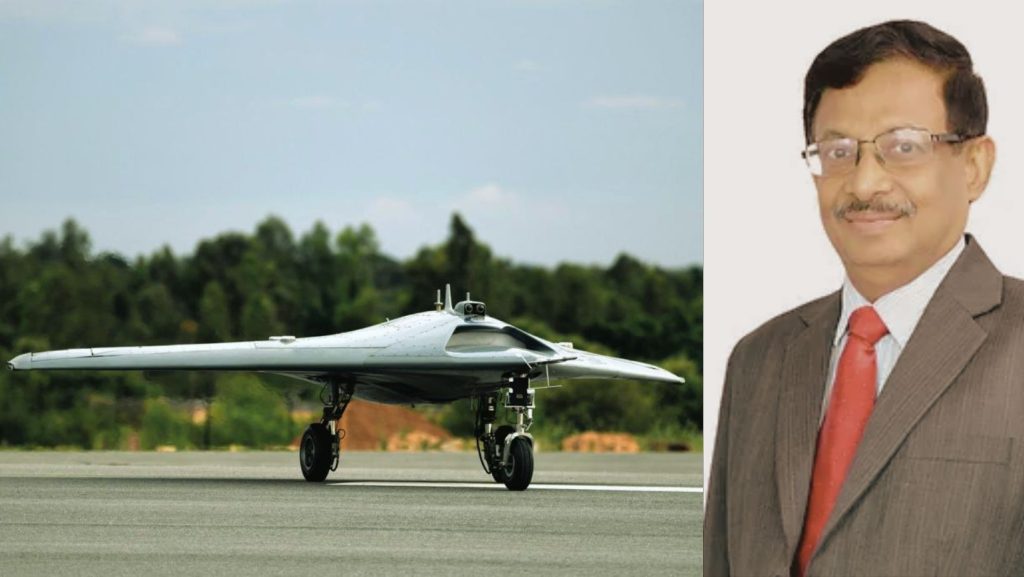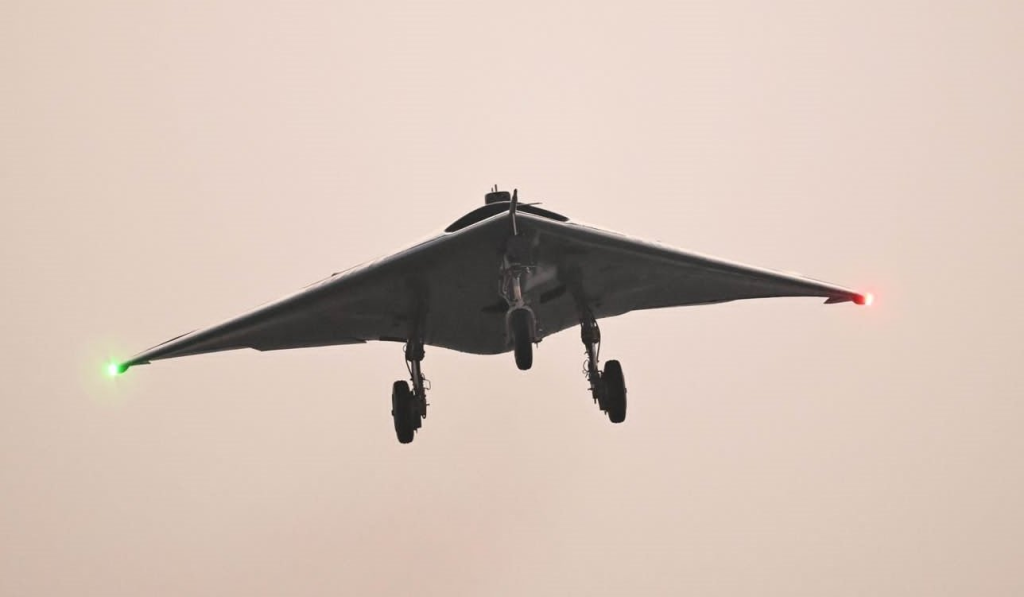
By BIJU UTHUP
Founding Project Director, GHATAK
Building on the success of the LCA Tejas program, the Aeronautical Development Agency (ADA) embarked on a new frontier, setting its sights on the development of advanced variants and cutting-edge projects such as the 5th Generation Advanced Medium Combat Aircraft (AMCA) and the Naval Combat Aircraft (NCA), culminating in the ambitious Ghatak UCAV project. ADA’s journey commenced with the audacious LCA Tejas program, the project definition phase was launched in October 1986, where our ADA team showcased unwavering dedication in crafting a 4+ generation fighter aircraft. This characterizes the boldness and daring ambition of the LCA Tejas initiative. Undertaken despite facing technology denials and sanctions, this endeavor aimed not only to meet the demands of modern aerial warfare but also to position India as a self-reliant force in aeronautical innovation.
Thus this ambitious program laid the foundation for ADA’s continued legacy of excellence, propelling India into the forefront of aeronautical innovation. With Tejas serving as a beacon, our focus transitioned to the next frontier, the development of improved variants of the 4+ Generation Air Force and Naval variant of LCA, including LCA MK-II, the 5th Generation Advanced Medium Combat Aircraft (AMCA), the Naval combat Aircraft (NCA), and an advanced UCAV. The GHATAK project, ADA’s brainchild, aimed to redefine India’s defense capabilities with its sixth-generation unmanned stealth bomber alongside the 5th Generation AMCA, which is currently in the advanced detailed design stages, on the verge of completing the Critical Design Review (CDR).

GHATAK UCAV: ADA’s Stealth Masterpiece
GHATAK UCAV codenamed earlier as AURA (Autonomous Unmanned Combat Aircraft), was a manifestation of ADA’s relentless pursuit of excellence in futuristic unmanned combat aircraft design. Designed as an autonomous self-defending reconnaissance aircraft, GHATAK boasted the capability of executing surgical strikes with unprecedented precision in stealth mode, avoiding enemy radar detection. This operational project has not been sanctioned so far for want of a suitable operational engine.
The world-class configuration design efforts by ADA for the development of a stealth UCAV were initially classified but gradually came to light through coverage by Livefist and an India Today report, based on a presentation by the then Chairman of DRDO at a conference in Sweden. Efforts were made to address these leaks, but further advancements at ADA became public knowledge through an ADA annual progress report available on the ADA website (open to the public) which was extensively reported by Livefist. These reports established that ADA had completed the conceptual and feasibility report, actively working towards completing the preliminary design phase through the Preliminary Design Review (PDR).

ADA’s ceaseless efforts to challenge aeronautical norms resulted in the intricacies of GHATAK’s design. Flying wing aerodynamics, radar-absorbent paint, serpentine intake, stealthy nozzle, and cutting-edge structural materials were just a glimpse into ADA’s pursuit of perfection. ADA completed the conceptual and feasibility study in 2013, initiating subsequent stages of design and launching advanced technologies necessary for the development and flight testing of operational GHATAK UCAV through collaborative efforts with academia, DRDO, and various aeronautical R&D establishments in India. The international aerospace community took note of ADA’s world-class configuration design efforts, declaring India as “Another rising power in the Asia-Pacific, India, is also developing its own UCAV technology demonstrator program, the Indian Unmanned Strike Air Vehicle (IUSAV),” in Aerospace Asia magazine.
At this stage if the right push was given to ADA for the development of a world-class Stealth operational UCAV as the natural continuation of the successful completion of the conceptual and feasibility study and ongoing preliminary design stage at ADA, the country would have continued its excellence in being another rising power in Asia for UCAVs and into the realm of 6th Generation Aircraft development. Unfortunately, this did not happen.
Transition of ADA’s GHATAK Project to ADE: Navigating the Dynamics
As I concluded my tenure as the Project Director of the GHATAK project, a strategic move by DRDO surprised many – the project transitioned from ADA to the Aeronautical Development Establishment (ADE). This shift from one organization to another raises natural questions about the rationale behind this decision and the implications it holds for the GHATAK project’s trajectory. ADA and ADE are two different organizations related to aeronautical development in Bangalore, India.

ADA was established in 1984 to oversee the development of India’s Light Combat Aircraft (LCA) program. It has developed Tejas and is developing AMCA, TEDBF, and DRDO Ghatak. On the other hand, ADE stands for Aeronautical Development Establishment, which is a key Aeronautical Systems Design House involved in the design and development of state-of-the-art Unmanned Air Vehicles and Aeronautical Systems to meet the requirements of the Indian Armed Forces. Unlike ADA, ADE is not known for their delivery of UAV products to the services with their satisfaction as compared to the delivery of operational LCA to the Indian Air Force.
It is crucial to emphasize that ADA played a pivotal role in advancing the GHATAK configuration and its associated technologies to a state of maturity before the project transitioned to ADE. These allowed ADE to seamlessly progress and successfully execute scaled flights. ADA’s meticulous optimization of internal and external aerodynamics, shaping for a low radar cross-section (RCS), and other crucial aspects, significantly contributed to the scaled GHATAK test flight success at ADE. Notably, the configuration design was executed with such precision at ADA that even ADE, an organization historically known for grappling with flight crashes in their own UAV designs, and flew ADA’s world-class flying wing UCAV design without encountering any mishaps. This stands as a testament to the exceptional indigenous configuration design prowess demonstrated by ADA throughout the GHATAK project while it was still at ADA.
One reason for this transition of the GHATAK project from ADA to ADE was DRDO’s desire to provide ADE and other DRDO cluster labs with a spotlight similar to ADA for their respective project successes. Several of the DRDO labs like GTRE and ADE were under scrutiny for non-delivery of their products to the users. GTRE (Gas Turbine Research Establishment) had faced challenges with the delivery of the KAVERI engine for the LCA, and ADE struggled to meet the operational UAV demands for the unmanned UAV, Nishant, and RUSTUMs for the services which recently resulted in the closure of the RUSTOM project as reported in the media, leaving ADE with the taking up GHATAK project gifted to ADE as their main life safer project now code named as SWIFT & Remotely Piloted Strike Aircraft (RPSA). In addition, the Government of India expressed dissatisfaction with the expected performance of DRDO, with Prime Minister Modi commenting in 2014 on the “Chalta hai” attitude of DRDO, a position the author agrees to even today. DRDO sought to salvage its image by allocating projects, such as GHATAK initiated and conceptualized at ADA, to labs that might not have conceived and executed them independently. This quick-fix decision was made despite ADA’s successful track record and contributions to India’s defense capabilities of delivering the LCA to the Indian Air Force.
Part 2 of this column comes up later this week
Biju Uthup graduated from IIT Kharagpur and the IISc, Bangalore, and is a retired Aerospace Engineer and former Project Director (GHATAK) & Outstanding Scientist at ADA who was responsible for conceptualizing and completing the feasibility study of the GHATAK UCAV project at ADA. He is currently the President of ADA Retired Employees Welfare Association (AREWA) and is actively advocating for the sanction of pension benefits to all eligible ADA retired employees.
